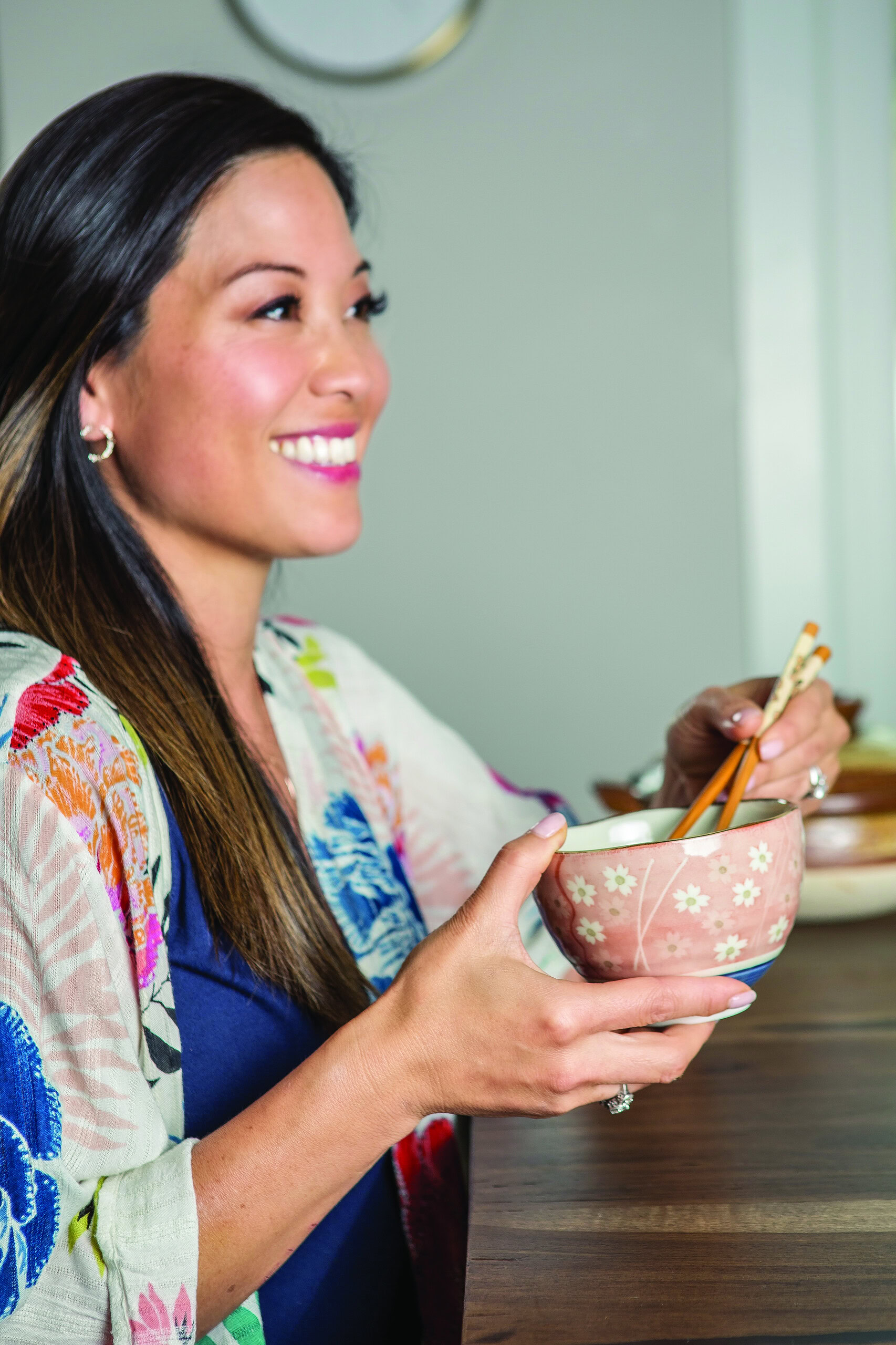
Gathering around a single steaming pot on a dining table may be exactly the kind of meal we all need right now. The communal hot pot entices us to interact.
“Hot pot is a great way to feed a family or to entertain,” says Boulder’s Amy Kimoto-Kahn, author of the freshly updated The Asian Hot Pot Cookbook. “Not only is it a cuisine that brings people together to have conversations, but it’s also a way for the host to not feel like they have to work during the meal.”
Just to be clear, hot pot is not an Instant Pot, the popular pressure cooking device.
“Hot pot cooking in Japanese culture means either dipping vegetables or proteins in hot broth — called shabu-shabu — or putting everything in one pot.”

The cookbook includes more than 65 one-pot creations ranging from Vietnamese oxtail hot pot and green vegetables in creamy corn broth to pork wontons in Macanese broth and ribeye shabu-shabu. Add a salad and a simple fresh dessert, and it makes a meal you can serve on a weeknight or for a party with a little preparation.
“I want it to be adaptable to all kinds of cultures, not just Japanese,” Kimoto-Kahn says, “and appealing to people who follow various diets.”
The Boulder chef, author and food blogger at easypeasyjapaneasy.com is the mother of three kids, ages 11 to 18. She published her debut cookbook, Simply Ramen, in 2016 and has worked as a personal chef to local sports stars like Nolan Arenado of the Colorado Rockies and JaVale McGee of the Denver Nuggets.
As a fourth-generation Japanese American, family gatherings around the hot pot hold special meaning.
“My mom and dad and their families were put in internment camps during World War II,” she says. “In the camps, they grew gardens and cooked for themselves.”
After the war, Kimoto-Kahn’s mother went to the University of Southern California. “My mom and her friends formed their own group, The Dames, who cooked and shared food,” she says.
Kimoto-Kahn credits that extended family with her early culinary education when she was growing up in Orange County. The Dames cookbook now resides at the Japanese American National Museum in Los Angeles.
“They taught us how to cook, how to host and how to garnish food with things from the garden so they appeal to the eyes, too,” she says.
Hot Pot 101: The dipping basics
In The Asian Hot Pot Cookbook, Kimoto-Kahn provides an illustrated glossary of ingredients. Here are the essentials.
Heat source: “You use a portable burner or hot plate on the table with a heat proof vessel for the simmering broth,” Kimoto-Kahn says. If not, you can bring a one-pot dinner hot to the table with a ladle.

Broth bases: “The broth is the heart of hot pot, so it needs to be good,” she says, whether you make it from scratch or purchase it. The cookbook includes recipes for chicken, beef, pork, vegetable and seafood broths.
Dippables: Hot pot dippers can include meat, seafood and veggies such as carrots, mushrooms and green onions, but they must be cut thin to cook quickly in the broth. Kimoto-Kahn uses a mandolin tool for slicing foods paper thin: “It works great on kabocha pumpkin.”
The name shabu-shabu comes, she says, “from the sound that you make when you’re swishing things in broth.” Long-handled forks are ideal for doing the dipping.
Dips and sauces: Meat, seafood and veggies cooked in broth can be dunked in a variety of savory sauces and dips on the table. Kimoto-Kahn offers multiple recipes for sauces ranging from ponzu to sukiyaki, but a wide selection of bottled condiments is also available at supermarkets and Asian grocers.
The noodle finale: One of the best things about hot pot dinners comes at the end after the dippers have fortified the broth. “You wouldn’t want to waste it, so, traditionally, you put the noodles in at the end and cook them al dente,” she says. “I like udon noodles because they’re a little thicker and soak up the flavor in the broth.”

The teacher becomes a student
Kimoto-Kahn recently started a degree program at Boulder’s Auguste Escoffier School of Culinary Arts that includes weeks of classroom and kitchen instruction, a farm-to-table experience and a bistro externship.
“I’m loving learning new skills,” she says. “I hope to teach cooking classes and someday open a restaurant with everything Japanese: the food, drink, earthenware and cutlery.”
During a recent family vacation in Costa Rica, the chef and author studied the local cuisine. She returned to cook her classmates a Costa Rican feast featuring tostones, chicken with rice, empanadas filled with steak and squash, and scratch-made sauces.
“It took me two days to cook it,” Kimoto-Kahn says proudly, “but I got an A.”
